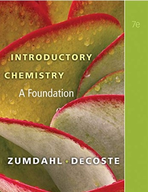Baking powder is a mixture of cream of tartar (KHC4H4O6) and baking soda (NaHCO3). When
Chapter 9, Problem 17(choose chapter or problem)
Baking powder is a mixture of cream of tartar (KHC4H4O6) and baking soda (NaHCO3). When it is placed in an oven at typical baking temperatures (as part of a cake, for example), it undergoes the following reaction (CO2 makes the cake rise): KHC4H4O6(s) _ NaHCO3(s) S KNaC4H4O6(s) _ H2O(g) _ CO2(g) You decide to make a cake one day, and the recipe calls for baking powder. Unfortunately, you have no baking powder. You do have cream of tartar and baking soda, so you use stoichiometry to figure out how much of each to mix. Of the following choices, which is the best way to make baking powder? The amounts given in the choices are in teaspoons (that is, you will use a teaspoon to measure the baking soda and cream of tartar). Justify your choice. Assume a teaspoon of cream of tartar has the same mass as a teaspoon of baking soda. a. Add equal amounts of baking soda and cream of tartar. b. Add a bit more than twice as much cream of tartar as baking soda. c. Add a bit more than twice as much baking soda as cream of tartar. d. Add more cream of tartar than baking soda, but not quite twice as much. e. Add more baking soda than cream of tartar, but not quite twice as much.
Unfortunately, we don't have that question answered yet. But you can get it answered in just 5 hours by Logging in or Becoming a subscriber.
Becoming a subscriber
Or look for another answer
